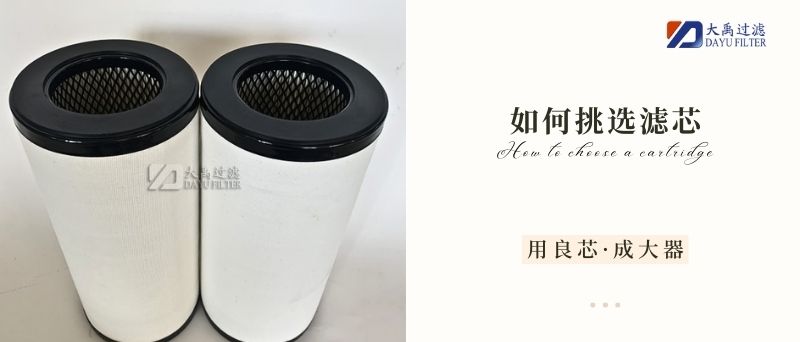How to select the cartridge
1. Selection of filter material
First of all, according to the chemical name of the fluid to be filtered, according to the chemical match with the contraindication to find out the available filter material, and then for its temperature, pressure, pH value, conditions (such as, whether to withstand steam, hot water or chemical sterilization, etc.), one by one assessment, and eliminate the unsuitable filter material. Use is also an important consideration, such as pharmaceutical, food or cosmetic filter material must be FDA-approved materials; ultrapure water must be selected pure, does not contain the release of substances that will affect the specific impedance of the filter material; filtration of gases must be selected hydrophobic materials and whether the need for “sanitary filtration” design and so on.
2. Filtration precision
This is a troubling issue. For example, to remove particles visible to the naked eye, to choose 25 micron filters; to remove clouds in the liquid, to choose 1 or 5 micron filters; to filter out ** small bacteria need 0.2 micron filters. The problem is that there are two units of filtration precision: precision/nominal precision.
Accuracy / Nominal Precision
Accuracy is the ability to remove 99% of the particles for which it is labeled. This is an almost impossible and impractical standard for any kind of filter, because 100% is an infinite value. Commercially known filters such as membrane, etc., strictly speaking, can only be called “close to” the filter, while all others belong to the nominal accuracy.
Nominal accuracy, this is the main problem: “nominal accuracy does not have a common industry recognized and comply with the standards. This means that Company A can set the nominal accuracy at 85-95%, while Company B would rather set it at 50-70%. In other words, Company A's 25 micron filtration may be equal to Company B's 5 micron filtration, or finer. In this case, an experienced filter supplier will be able to help in the selection of filtration accuracy, and the fundamental solution is “trial and error”.
3. Filtration System Design
This title involves a wide range of issues, such as which pressure source should be used, how much pressure is needed, whether two sets of filters need to be installed in parallel to fit the continuous system, how to match the coarse and fine filtration with the occasions of a wide distribution of particle sizes, and whether the system needs to be equipped with a backstop valve or other devices, etc. These require the use of units and filter suppliers. These all need to use units and filter suppliers to work closely together to find out the appropriate design.
4、Difference between surface filtration and depth filtration
Surface filtration mainly adopts screen material, while depth filtration adopts felt material, and their differences are as follows:
1), the screen material (nylon monofilament, metal monofilament) will filter the impurities directly retained on the surface of the material. Advantage is that the monofilament structure can be repeatedly cleaned, lower consumption costs; and the disadvantage is that the surface filtration mode, easy to cause clogging on the surface of the filter bag, this type of product is suitable for coarse filtration occasions with lower precision, filtration precision 25-1200μm.
2), felt material (needle punched cloth, soluble blowing nonwoven) is a common deep three-dimensional filtration material, which is characterized by loose fiber tissue, high void ratio increases the capacity of impurities intercepted, the fiber material is a compound retention mode, that is, the larger particles of impurities are retained on the surface of the fibers, while the fine particles are captured in the deep layer of the filter material, so the filtration has a higher filtration efficiency, and in addition to high-temperature surface heat treatment, i.e., the application of Instantaneous sintering technology, can effectively prevent the filtration of fibers by the fluid at high speed and scattered; felt material is a discarded (one-time use), filtration precision 1-200μm.
5, the main use of filter felt material performance is as follows:
Polyester - commonly used filter fibers, good chemical resistance, the temperature is less than 170-190 ° C
Polypropylene - used for liquid filtration in the chemical industry, with definitely anti-acid, alkali function, the temperature is less than 100-110 ℃.
Wool - very good resistance to solvents, but not for acid, alkali filtration
Nylon - good chemical resistance function (except acid resistance), the temperature is less than 170-190 ° C
Fluoride - good resistance to temperature and chemicals, the temperature is less than 250-270 ° C




